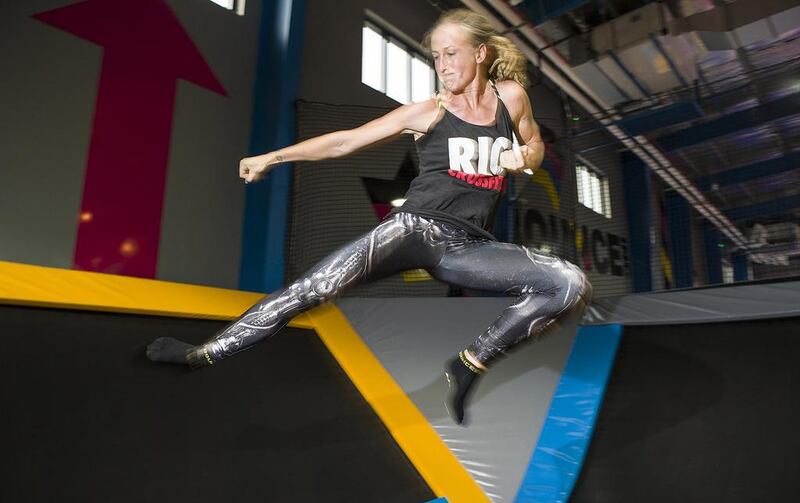DUBAI // Ooooh, a trampoline. That looks fun – just like when we were children.
On the other hand, for the less agile among us trying to relive the rough and tumble of youth, perhaps not. Doctors and physiotherapists report a surge in the number of people seeking treatment for twisted knees, sprained ankles, pulled muscles and worse after enthusiasm got the better of common sense.
Venues such as the Bounce trampoline park, the Circus School Dubai and the Jump Boxx gymnastics centre are part of a new trend for energetic sports that has sprung up in the past year. They are not without risk.
Bouncing on a trampoline, “you jump two metres in the air and one bad land can mean rupturing your knee in one go”, said Dr Gustavo Reque Rydberg, sports doctor at the Up and Running Dubai clinic.
In the past two months, the clinic has treated four people with ruptured knees and one youngster who suffered a sprain in the thoracic spine, resulting in two months of immobility.
Many others needed treatment for wrist and ankle sprains after visiting one of the clubs.
Dr Rydberg acknowledges it is a difficult for staff at these venues to make sure people play safe. “People just want to go in and jump so it’s very difficult to assess the technical ability and then limit someone.”
Physiotherapist Darren Stanborough said the problem was a lack of screening of customers beforehand. “I don’t think they do any kind of screening for previous injury.”
Greg Campbell, experience manager at Bounce, said the venue mostly treats minor injuries, such as rolled ankles.
“Most injuries are from people jumping outside their skill level, We make Bounce accessible for everybody but some people are reckless, which is what our referees are there for. We can’t monitor every single jump but our staff do intervene if they see someone trying something they might not be able to do.”
The venue has a “free jumping area” with trampolines on the floor and walls with rebound surfaces and frames covered in padding. To make the experience as safe as possible, only one person is allowed on a trampoline at a time.
Staff have experience in gymnastics and the referees are trained in CPR and First Aid. Mr Campbell’s message to visitors is to “take it easy”. “For the first five minutes, your body’s motor skills are just getting used to what is happening.”
Jesse Akister, 30, from Australia, strained a ligament in her right knee at Bounce.
“I felt the twinge but was so excited I kept going. It was tender to walk on when I left and then I went straight home to bed. I woke up and couldn’t put any weight on my leg. It was like that for about a week. I don’t know if a safety or skill session is necessary but definitely a recommendation to start slow.”
Karina Bensemann, 36, hurt herself practising a technique called “walking the wall”.
“I put my hand out to the solid barrier so I wouldn’t bounce back up. But the trampoline compressed at a much faster rate than I could bend my arm and my elbow popped out and went back into place.”
Tougher regulations are needed, said Sean Smith, a researcher specialising in corrective movement therapies and also a performing acrobat.
“Bounce is good, people use it poorly that’s all. The front flip is the most common cause I see for whiplash and spinal/neck injuries due to a loss of rotation and looking down when they hit.”
He said venues need to be stricter when policing the rules to stop people acting dangerously.
“No back flips into the pits unless clearly capable, no teaching of others unless you are qualified. They have rules there but they should announce them more clearly and enforce punishment, like removing patrons who mistreat those rules.”
Lii Schacht, a doctor of naprapathy, a mix of osteopathy and physiotherapy, has seen patients with injuries including lower back and neck problems after visiting such venues.
“People just need to take a step back and take it easy,” she said. “Activities are always a risk and, like anything, you need to know your limits.”
mswan@thenational.ae





